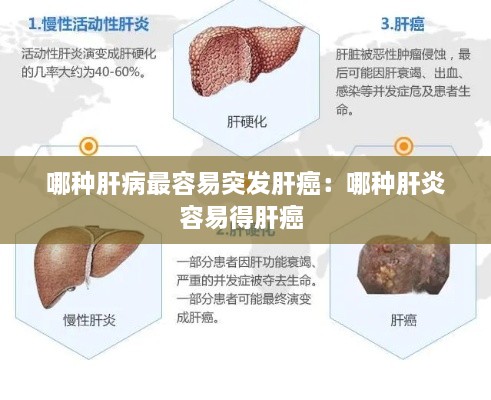<!DOCTYPE html>
Which Liver Disease is Most Likely to Lead to Hepatocellular Carcinoma?Introduction to Liver Diseases and Hepatocellular Carcinoma
Liver diseases are a significant health concern worldwide, affecting millions of people. One of the most severe outcomes of liver disease is hepatocellular carcinoma (HCC), also known as liver cancer. Understanding which liver disease is most likely to lead to HCC is crucial for early detection and prevention strategies.
Chronic Hepatitis B (CHB)
Chronic hepatitis B (CHB) is one of the most common causes of liver cancer. This viral infection can lead to chronic inflammation of the liver, which over time can cause liver cirrhosis and HCC. The hepatitis B virus (HBV) is highly contagious and can be transmitted through blood and bodily fluids. In fact, approximately 80% of individuals infected with HBV will develop chronic liver disease, and a significant percentage of these individuals will develop HCC.
Factors that increase the risk of HCC in individuals with CHB include:
- Long-standing infection
- Genetic factors
- Alcohol consumption
- HBV genotype C, which is associated with a higher risk of HCC
Chronic Hepatitis C (CHC)
Chronic hepatitis C (CHC) is another leading cause of liver cancer. Similar to CHB, CHC is a viral infection that can lead to chronic liver inflammation, cirrhosis, and HCC. The hepatitis C virus (HCV) is primarily transmitted through blood-to-blood contact, such as sharing needles or receiving contaminated blood transfusions.
Individuals with CHC have a higher risk of developing HCC, especially if they have:
- Long-standing infection
- Advanced liver fibrosis or cirrhosis
- Older age
- Genetic factors
- Exposure to other liver-damaging substances, such as alcohol
Cirrhosis
Cirrhosis is a late stage of liver disease characterized by extensive scarring of the liver. It can be caused by various conditions, including CHB, CHC, alcohol abuse, and non-alcoholic fatty liver disease (NAFLD). While cirrhosis itself is not a direct cause of HCC, individuals with cirrhosis are at a significantly increased risk of developing liver cancer.
The risk of HCC in individuals with cirrhosis can be further increased by:
- Long-standing cirrhosis
- HBV or HCV infection
- Metabolic syndrome
- Alcohol consumption
- Obesity
Non-Alcoholic Fatty Liver Disease (NAFLD)
Non-alcoholic fatty liver disease (NAFLD) is a growing concern, especially in developed countries where obesity and metabolic syndrome are prevalent. NAFLD is characterized by the accumulation of fat in the liver, which can lead to inflammation and liver damage. While NAFLD is not directly linked to HCC, individuals with advanced NAFLD, such as non-alcoholic steatohepatitis (NASH), are at an increased risk of developing liver cancer.
Factors that may increase the risk of HCC in individuals with NAFLD include:
- Severe liver inflammation
- Metabolic syndrome
- Insulin resistance
- Obesity
- Long-standing NAFLD
Conclusion
Among the various liver diseases, chronic hepatitis B and chronic hepatitis C are the most common causes of liver cancer. Individuals with these conditions, particularly those with advanced liver disease or cirrhosis, are at a significantly increased risk of developing hepatocellular carcinoma. Early detection, regular monitoring, and appropriate treatment are essential in managing these conditions and reducing the risk of HCC.
转载请注明来自陵县立信制衣有限公司,本文标题:《哪种肝病最容易突发肝癌:哪种肝炎容易得肝癌 》









 蜀ICP备2022005971号-1
蜀ICP备2022005971号-1
还没有评论,来说两句吧...